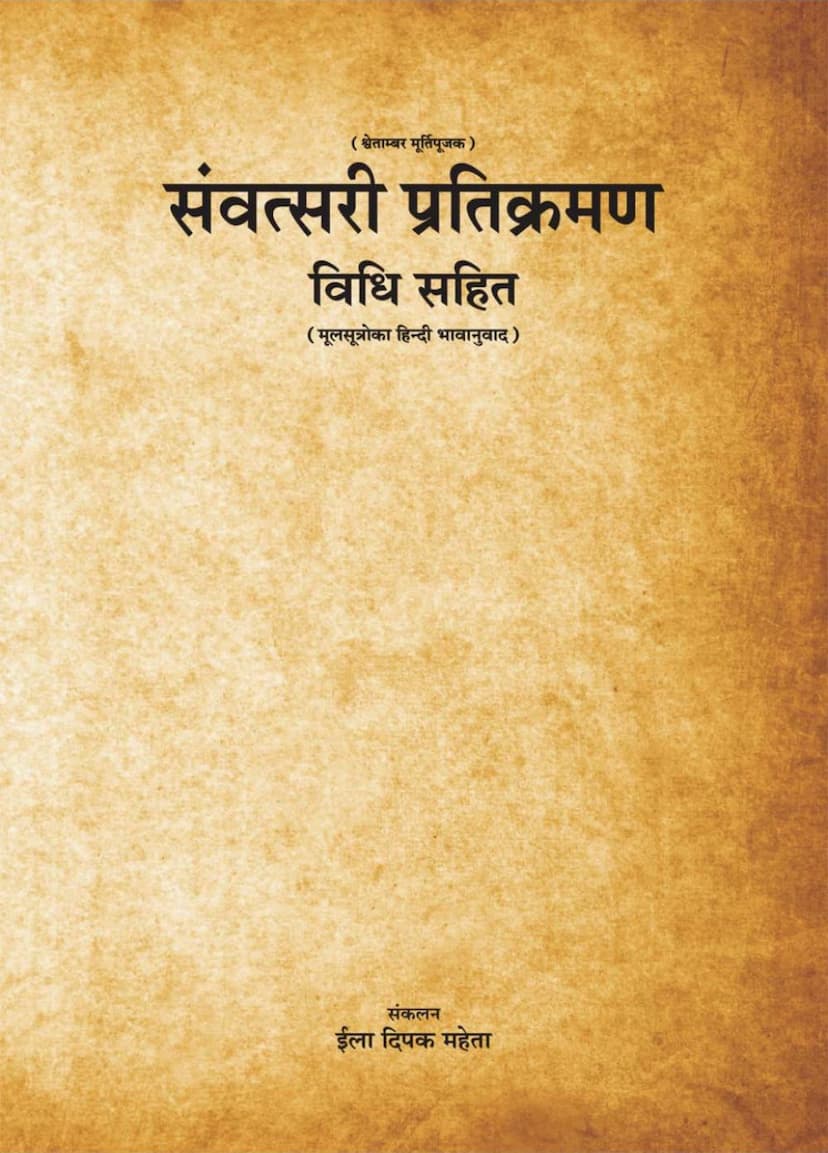Samvatsari Pratikraman Hindi
Added to library: September 2, 2025
Loading image...

Summary
This Jain text, titled "Samvatsari Pratikraman Vidhi Sahit" (Samyatsari Pratikraman with Method) and compiled by Ila Deepak Mehta, is a comprehensive guide to performing the Samvatsari Pratikraman, a significant ritual in the Shvetambara Murtipujaka Jain tradition.
Key aspects of the book include:
- Purpose: The book aims to provide a detailed, step-by-step method for performing the Samvatsari Pratikraman, along with a Hindi translation and explanation of the original Sanskrit/Prakrit scriptures (Mul Sutra). The goal is to enable devotees to perform the ritual with understanding and devotion.
- Target Audience: It is dedicated to all seekers who wish to perform the Samvatsari Pratikraman methodically and with comprehension. The author expresses a desire for this book to be in the hands of every practitioner during the Paryushan festival of 2015.
- Inspiration and Motivation: The compilation was inspired by the author's desire to understand the underlying reasons and scientific methods behind Jain rituals. It was also influenced by a desire to educate younger generations, who might be less familiar with Jain traditions due to modern education. The author was motivated by her father-in-law's encouragement to use a substantial donation for a noble cause, which she saw fulfilled in this endeavor.
- Content and Structure: The book meticulously details the various components of the Pratikraman, including:
- Six Essential Activities (Chhah Avashyak Kriya): These are identified as Samayik, Chaturvimsati-stotra (Loggassa), Vandan (Guru Vandana), Pratikraman (Pratikraman Sutra), Kayotsarg, and Pratyakhyan (vow-taking).
- Essential Utensils and Their Significance: The book illustrates and explains the purpose of various items used during the ritual, such as the Astapanacharya (establishment of a spiritual authority), Katasnu (a woolen mat), Muhapatti (a cloth worn over the mouth), and Charvalo (a broom-like instrument for purifying the ground).
- Detailed Ritualistic Procedures: It provides instructions on how to perform actions like Khama-saman (a posture of humility and forgiveness), Kayotsarg (self-mortification and meditation), and Muhapatti Pratilekhana (purification of the Muhapatti).
- Scriptural Explanations: The book includes the original verses (sutras) with their Hindi translations and elaborations, explaining the meaning and spiritual significance of each chant and action.
- Visual Aids: The inclusion of illustrations (pictures) for various postures and rituals helps in understanding and practicing the procedures correctly.
- Specific Sections: The table of contents indicates detailed explanations of various aspects, including the eighteen types of sins (Pap Sthanak), the concept of Atichar (transgressions), various stanzas for peace and well-being (Shanti Stotra), and the process of concluding Samayik (Samayik Parneki Vidhi).
- Philosophical Underpinnings: The text emphasizes the importance of understanding the "why" behind the rituals, not just performing them mechanically. It highlights Pratikraman as a means of purifying the mind and soul, reducing passions (kashayas), overcoming desires, and cultivating virtues like forgiveness and equanimity. The concept of returning from the path of negative influx (aasrava) to the path of cessation of influx (samvara) and shedding of karma (nirjara) is central.
- Acknowledgements: The author expresses gratitude to various individuals, including spiritual guides, family members, and scholars, who supported the creation of this book. She also seeks forgiveness for any errors or omissions.
In essence, "Samvatsari Pratikraman Vidhi Sahit" is a meticulously crafted guide designed to facilitate a deeper and more meaningful experience of the Samvatsari Pratikraman for Jain devotees, bridging the gap between ancient scriptures and modern understanding.